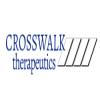Dive Brief:
- Medicare Part D spending on Gilead's top-selling hepatitis C drug Harvoni (ledipasvir/sofosbuvir) jumped to just over $7 billion in 2015, the most spent on any prescription drug in the program, according to figures released by the Centers for Medicare and Medicaid Services (CMS) on Monday.
- Data also showed the average cost per unit of 11 drugs — most of them generics — more than doubled in 2015. The average cost of Glumetza, a high blood sugar drug from Valeant, jumped the most, skyrocketing 381% year over year to $39.10 per unit from $8.17 per unit.
- CMS' updated report details program spending on 80 drugs, 40 provided through Part D and 40 administered by physicians through Part B. The data underscores the growing burden of prescription drug spending, even though rebates from manufacturers are not included due to legal restrictions.
Dive Insight:
Sanofi's Lantus, AstraZeneca's Crestor, GlaxoSmithKline's Advair Diskus and Boehringer Ingelheim's Spiriva rounded out the top 5 in total Part D spending, as shown below. Each accounted for more than $2 billion in total undiscounted spending.

The exclusion of rebates from CMS' figures is an important point. Most drug manufacturers provide rebates and discounts to payers in order to secure coverage, meaning gross drug costs can significantly overstate the net price paid. Rebates to Medicare tend to be less, however, as CMS' ability to negotiate drug prices with manufacturers is limited by law.
For the first time, however, CMS released aggregate numbers on 2014 Part D rebates. Total brand name drug rebates added up to nearly $16.3 billion on a gross drug cost of $93 billion, which translates to aggregate rebate of 17.5% on Part D drugs.
Rebates on cardiovascular drugs were particularly noteworthy, representing 26.3% of total brand name drug costs in that class.
Despite the absence of rebate information on specific drugs, the steep annual cost increases seen at the top of Medicare's list can still be revealing. Costs for Glumetza and WellButrin XL — both made by Valeant, one of the main targets of recent pricing criticism — more than doubled. Average unit costs for Pennsaid, an arthritis drug made by Horizon Pharma, increased 296% year over year.
And costs for eight other generic drugs, which in theory would command limited pricing power, more than doubled as well.
CMS also included data on Medicaid drug spending for the first time this year, revealing that an estimated 75% of the increase in spending between 2013 and 2014 was due to price increases.
Drugmakers will likely criticize CMS' data, pointing to the limitations on rebate data. Yet the information will also likely be seized upon by critics of the industry as evidence of the rising burden of prescription drug spending on taxpayers.














